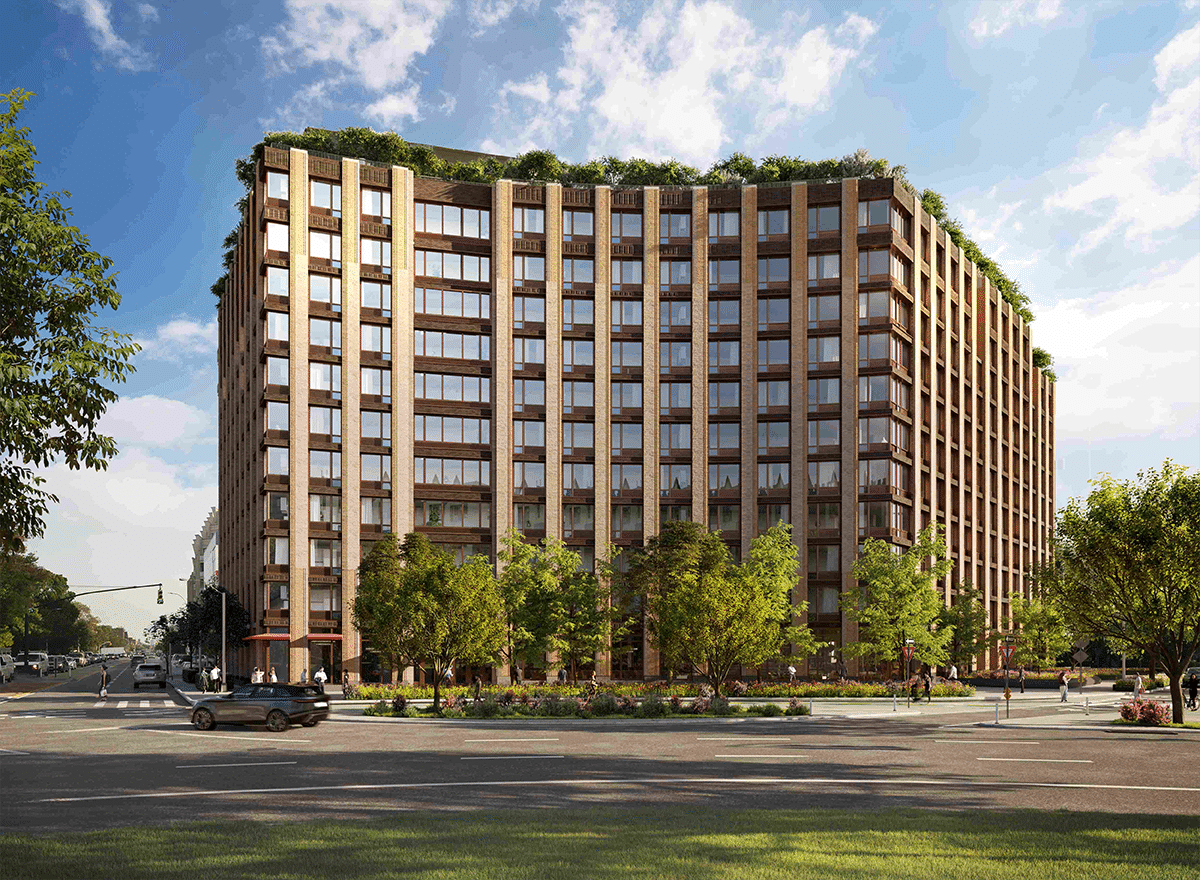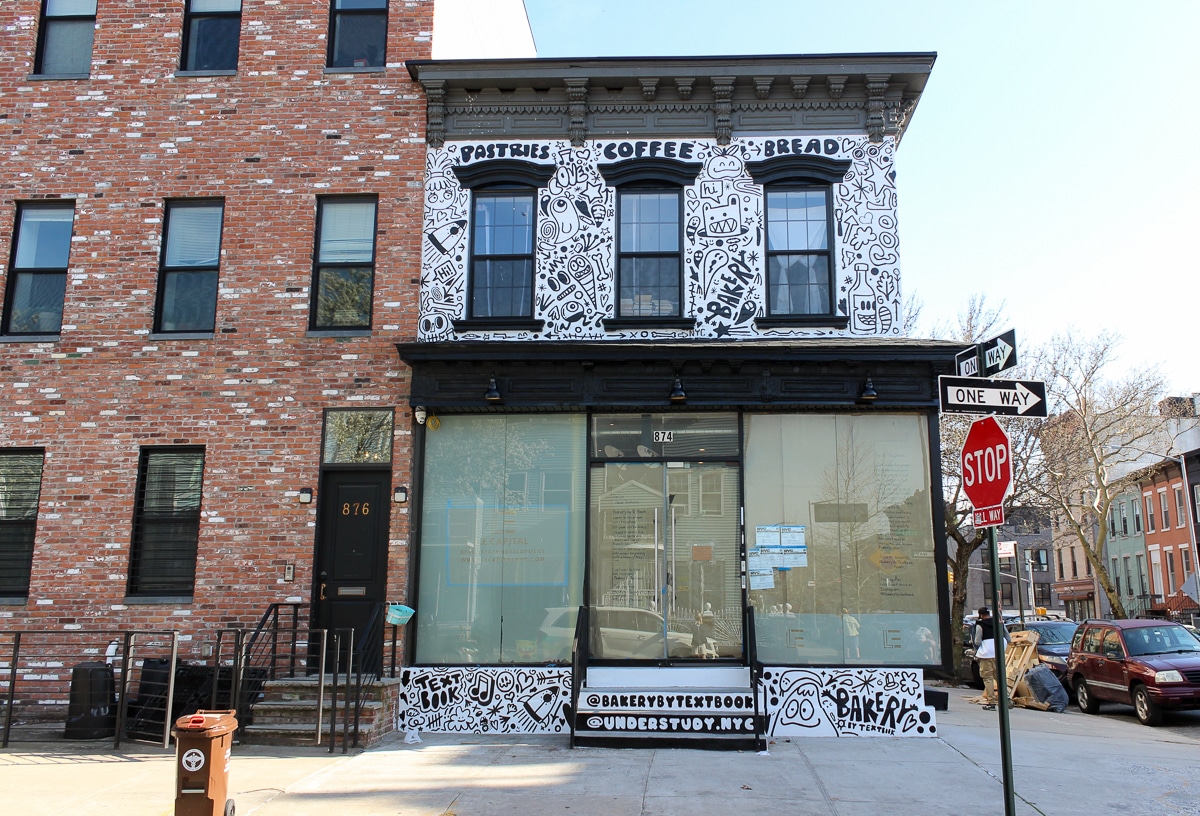Building of the Day: 1346 President Street
Brooklyn, one building at a time. Name: St. Mark’s Day School, formerly House of St. Giles, the Cripple Address: 1346 President Street Cross Streets: Brooklyn and Kingston Avenues Neighborhood: Crown Heights South Year Built: 1916 Architectural Style: Spanish Mission Revival Architect: Frank T. Fellner (1913), then Ludlow & Peabody (1914-16) Other works by architect: Ludlow…

Brooklyn, one building at a time.
Name: St. Mark’s Day School, formerly House of St. Giles, the Cripple
Address: 1346 President Street
Cross Streets: Brooklyn and Kingston Avenues
Neighborhood: Crown Heights South
Year Built: 1916
Architectural Style: Spanish Mission Revival
Architect: Frank T. Fellner (1913), then Ludlow & Peabody (1914-16)
Other works by architect: Ludlow & Peabody – buildings on the campus of Vanderbilt University, Nashville; Hampton University, Virginia; Sheldon Jackson College, Alaska; old New York Times Building, Mercantile Building, and other Manhattan office buildings.
Landmarked: No
The story: In 1891, an Episcopalian nun named Sister Sarah founded the House of St. Giles, the Cripple, on DeGraw Street, in Carroll Gardens, one of the first hospitals dedicated to the orthopedic care and treatment of children. They focused not on only on surgical and other medical treatment, but also specialized in rehabilitation and after-care. In 1916, after raising funds for a new facility, the hospital moved here, to this new facility on President Street, right in the heart of this affluent neighborhood. Sadly, there was objection to the hospital, and they had to go to court to get it built.
The first plans, with accompanying rendering seen below, were developed by architect Frank T. Fellner, which would have produced a nice building, but very different from what was built. Fellner’s design was a classically based Renaissance Revival building. They ended up going with the more eclectic Spanish Mission Revival designs of the Park Avenue Manhattan firm of Ludlow & Peabody, who specialized in hospitals, churches, college buildings and office buildings.
Charles Peabody was a Harvard man, and had graduated second in his class of two hundred, at Paris’ Ecole des Beaux-Arts. William Orr Ludlow had worked in the offices of Carrère and Hastings. The firm was known for its fine skyscraper office buidings in Manhattan, including the old New York Times building. They also specialized in college building, with examples as far flung as Alaska, Tennessee and Virginia. The building’s design is pure Mission Revival, and I would surmise the architects drew upon the architecture of sunny Southwestern climes to invoke the healing properties of sunlight, fresh air and warmth.
In 1916, a terrible polio epidemic swept the nation, and the new St. Giles was soon filled to capacity. It was a popular Brooklyn charity, and had a fundraising club called the Tiny Tim Society, which raised thousands of dollars, and was a participant in the first “March of Dimes” events to combat polio. The hospital grew with an annex and a summer cottage by the sea on Long Island. Another St. Giles opened in Garden City, as well. The hospital would go on treating polio, both in house and outpatient, until the 1950s and early 60s, when the Salk and Sabine vaccines finally conquered this dread disease. By 1978, orthopedic care was being given in larger public and private hospitals, and polio had almost disappeared, so the decision was made to close the hospital and turn the building over to a different use. St Giles still exists as a charitable foundation.
St. Mark’s Episcopal Church is right across the street, and in 1978, bought the building for $250,000 for use as a parochial day school, which today has 517 students in PK-8th grade. This is a beautiful building that also fits in well with the wildly eclectic residential architecture of well-heeled President St. GMAP
Even long dead Brooklyn architects need a break sometimes, so I’ll be posting some oldies but goodies this week. I’ve beefed them up with new information whenever possible, so enjoy.













What's Your Take? Leave a Comment